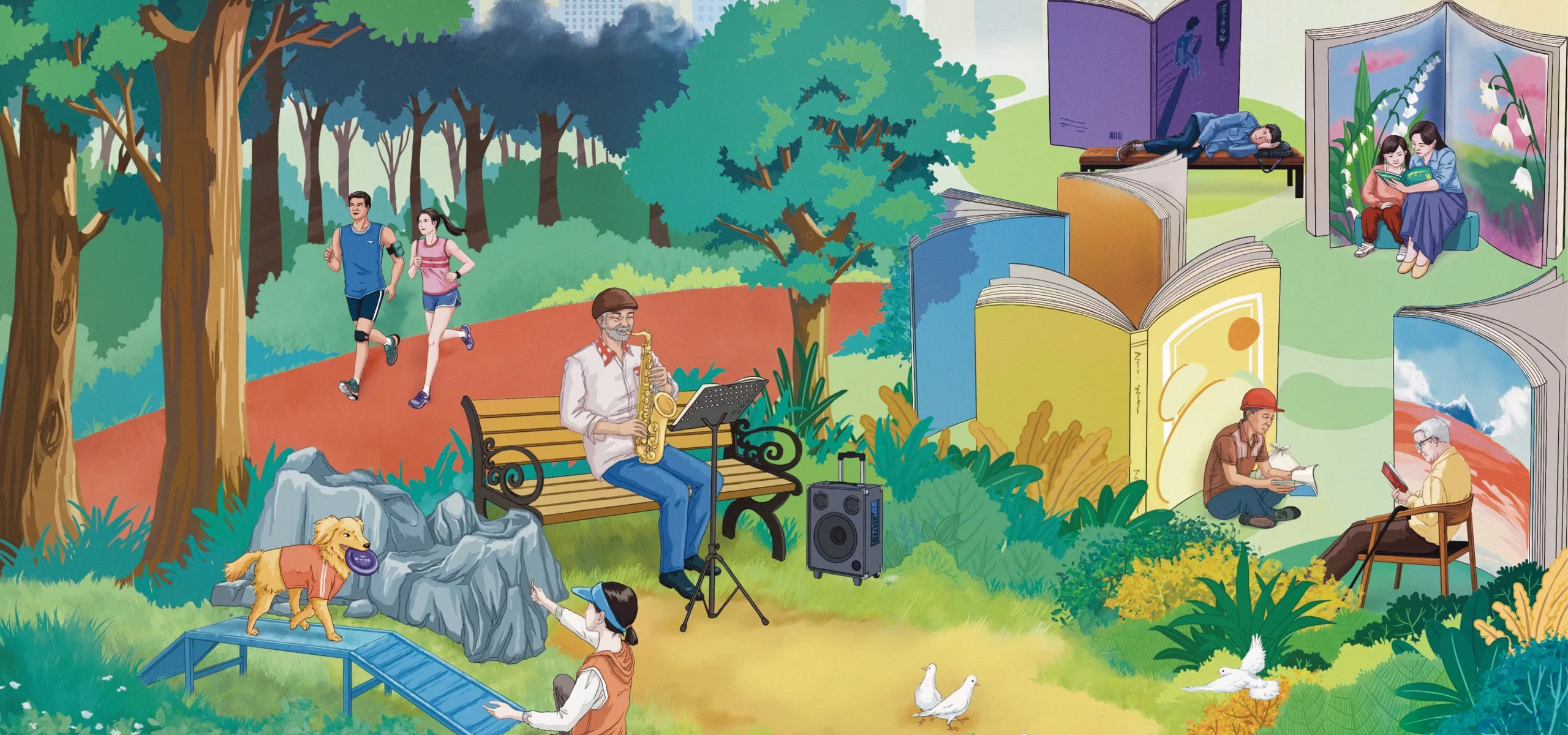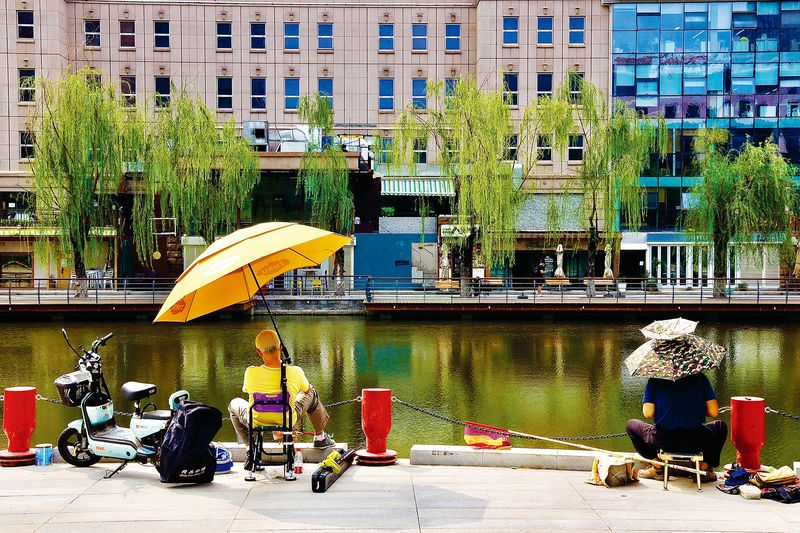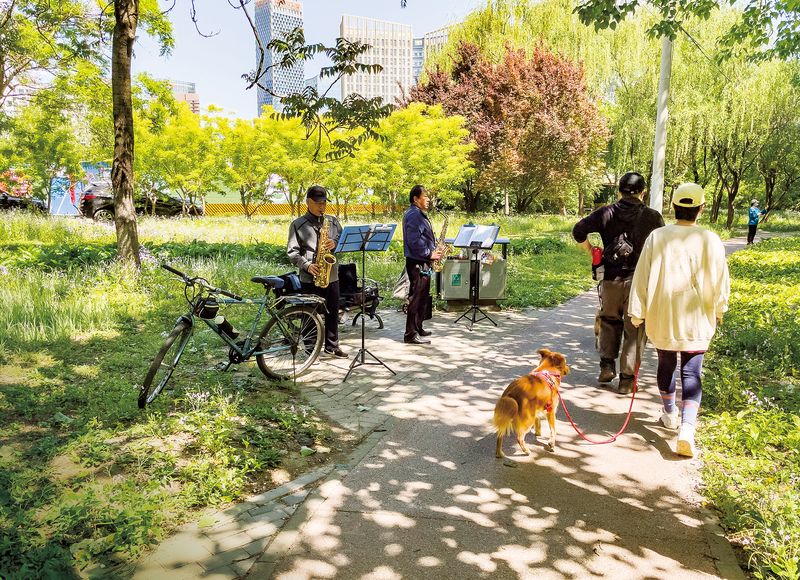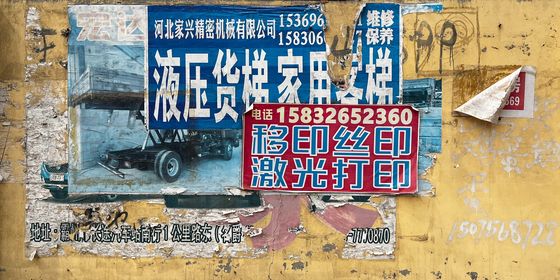China is trying to build more public spaces, but who has the right to use them—and how—remains contested
Lin Qiuming couldn’t tell if she was out for a stroll, or starring in a spy movie. Throughout May, the young journalist had gotten used to dodging roving guards and blocked-off paths whenever she came to the Liangma River—one of the only outdoor hangouts still available in Beijing during a Covid outbreak that month—in search of the bench or tree where she’d agreed to meet a friend or an interviewee. “It was like we were using code; it felt very surreal,” she tells TWOC.
Nicknamed the “Seine of Beijing” by residents of the capital, the 9.3-kilometer river, which runs through the affluent Chaoyang district, saw unprecedented traffic after the city shut down indoor dining and most other public venues, including outdoor parks, to contain the spread of the virus on May 1, which was also the start of a three-day public holiday. In the subsequent weeks, the riverbanks became a makeshift restaurant, cafe, gym, sports field, and even a public dance floor, hosting all the social activities that middle-class urbanites no longer had a space for.
But the good times didn’t last. Barely a week later, security guards put tape and iron sheets around some of the grassy areas. By the end of the second week, there were checkpoints by parts of the river where one had to scan a QR “health code” to enter, and gatherings of people were frequently broken up by patrolling security guards. Lin and her friends brought a picnic to the river one day and “played hide-and-seek” with guards for several hours before they finally gave up, she says.
“The fundamental function of the public space is to provide space for the public to have interactive activities,” says Lai Wenbo, the head designer of Guangzhou’s LAI studio, which has designed over 20 such spaces, including parks and campsites, across China. In Beijing, such places are rare. The Liangma River was one of the few that “had no requirements, no time limits,” where one could “sit on the ground to experience closeness with nature,” as Chinese magazine Portrait put it.
Covid-19 has heightened the precarious existence of such spaces around the country. Spaces like the Liangma River, or Shanghai’s West Bund and Xi’an’s Qujiang Lake, were non-commercial, had no opening hours, and were relatively hard to close off or patrol due to their length. At various points during this year, they were the only substitutes in their respective cities for KTVs that closed during the pandemic, the restaurants and cafes that had suspended dine-in services, the malls that required negative nucleic acid test results to enter, and the parks that were either closed completely or limited access.
“It would give me this feeling that you need to be healthy, or normal to be qualified to enter the parks that you used to be able to enter randomly,” says Lin of these restrictions. Even the remaining open spaces, like the Liangma River, gave her a sense of panic: “You feel like they could be closed anytime…we need to take the opportunity and use it as soon as possible, or it will close again.”
Shen Maohua, a prolific columnist and critic who often writes about urban spaces under the pen name Wei Zhou, believes China does not yet have true public spaces—rather, it has “confined spaces.” “It’s the idea that the existence of public spaces, the scale of their openness, the degree of their vitality, all need to be confined,” Shen explained to TWOC, mentioning that the gates, the tickets and the memberships that are required to enter supposedly public spaces, including even parks, are tools of control over who can use them, how, and how much.
Landscape design in China has traditionally focused on gated and enclosed spaces—as typified by the imperial gardens and courtyard homes of the ancient elite. Even rural spaces were not exempt: Village squares tended to be surrounded by homes of blood-related families, and ancestral temples hosted gatherings only for people of a common lineage.
With the founding of the PRC in 1949, the public space began functioning as the representation of socialist ideology. The government built outdoor spaces like public squares and monuments, which often served as places for the public to study socialism or criticize those suspected of not adhering to socialist beliefs. Recreational spaces, on the other hand, tended to be found within schools, factories, military compounds, and other “work units,” which organized group exercises and dancing, and offered communal facilities for those working within their sprawling campuses.
The demand for truly “public” spaces, not reserved for any special activity or specialized group of people, rose sharply after the reform period. During the period of relative openness of the 1980s, young people and workers, including students who finally returned to universities after the Cultural Revolution, gathered in public squares or college parks to discuss their concerns over the country’s future and demand reform. When China entered the 90s, under the impact of globalization, urban design adopted international standards with commercialized urban plazas and Western-style pedestrianized streets.
As the prevalence of public space has risen, so too have conflicts between different groups over who has the right to a public space, and how it ought to be used. Retirees who gather in public squares to exercise, often by dancing to loud music, in the early mornings and late evenings, have attracted noise complaints from their neighbors. Infamously, fed-up residents of one neighborhood in Changsha, Hunan province, pelted their local square dancers with feces on three separate occasions between 2012 and 2013. Police in the city of Luoyang in Henan province have broken up at least two brawls in recent years between retirees dancing on public basketball courts, and young men trying to play a pick-up game.
In the last decade, China has begun emphasizing public space in urban planning. “Urban construction changed from the previous big move on demolition and reconstruction to upgrading and optimizing present urban public spaces,” says Lai. In 2015, President Xi Jinping advised the government to focus on the “livability” of cities, rather than just GDP, and “assure balance between spaces of production, living spaces, and ecological spaces.” In 2021, the State Council announced that there were about 18,000 city parks in China, an increase of 50 percent compared to 10 years ago.
Along with building more public spaces, some cities have stopped charging people for using them. Of the 406 parks in Shanghai, 392 stopped charging entrance fees as of 2021, according to the city’s environmental sanitation bureau, and Beijing’s Chaoyang Park became free in February of the same year. Some parks, like People’s Park in Shanghai, have also removed walls and fences from their landscaping.
Yet just because such spaces are being built or opened up, doesn’t mean the public can always use them as they wish. Chinese officials continue to be sensitive to public gatherings, especially those that could turn political. “Stability” has been a leading principle in Chinese governance since Deng Xiaoping articulated it to the CPC Central Committee. Under this rule, public activities that might lead to disorder or even instability have been carefully controlled.
In 2020, when Premier Li Keqiang called on cities to develop the “street stall economy (地摊经济)” to boost the post-pandemic economy, the project was quickly shut down in Beijing amid complaints about hygiene and disorder, with Beijing Youth Daily claiming street stalls didn’t suit the capital city and it should “maintain the orderliness that a city should have.”
Shen believes the lack of physical public spaces in China also leads to the lack of a “public,” as defined by German philosopher Jurgen Habermas as a “realm of social life” where public opinions can be shared. Lin has observed that, since the pandemic started, she’s felt an increased desire to meet people in person rather than online, as she thinks online discussions are irrational, lack real continuation or connection, and can lead to extremism. “I feel the lack of public spaces could lead to this type of aggression becoming more severe,” she says.
“China is in the transitional period during modernization, which means the rules for public communication are still being established,” Shen says. He believes that ordinary people still have a deep-seated fear of chaos, leading them to value order rather than “vitality.”
This is especially true during the pandemic. “The Chinese public has the highest acceptance levels in the world when it comes to prevention policies such as lockdowns, which means, to them, public life is not as important as their safety,” says Shen.
He believes the situation will only change when Chinese society becomes more accepting of diversity. “The public, who feel discomfort and unease about the inclusiveness of public spaces, demand ‘confined spaces,’ and these confined spaces in turn have also shaped [the character of] the public.”
The iron sheets beside the Liangma River have now been removed. But with the pandemic still raging, they may not be gone forever. In some ways it took their closure for Lin and others to truly appreciate the value of such areas, even if the circumstances were far from ideal. “It’s awkward that we rediscovered public spaces this way,” says Lin.
Parks, No Recreation: The Battle to Access China’s Public Spaces is a story from our issue, “Public Affairs.” To read the entire issue, become a subscriber and receive the full magazine.















